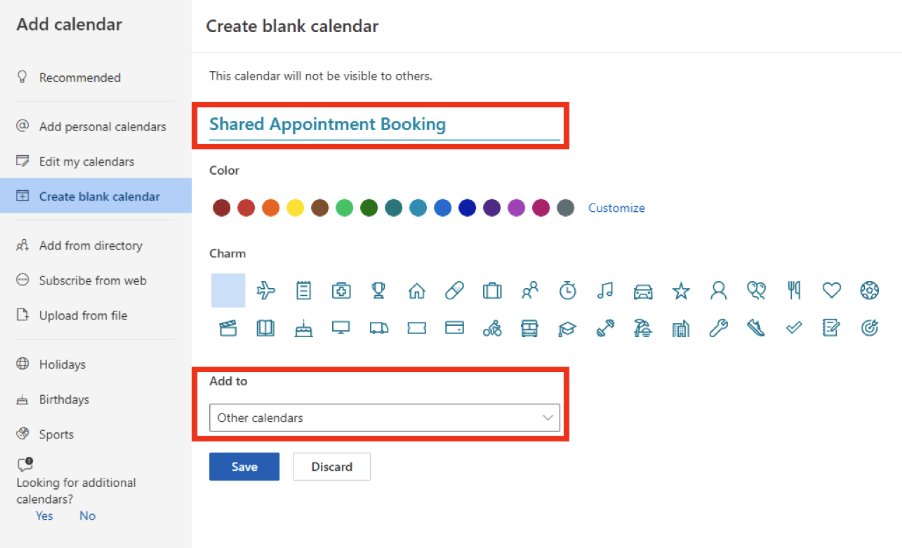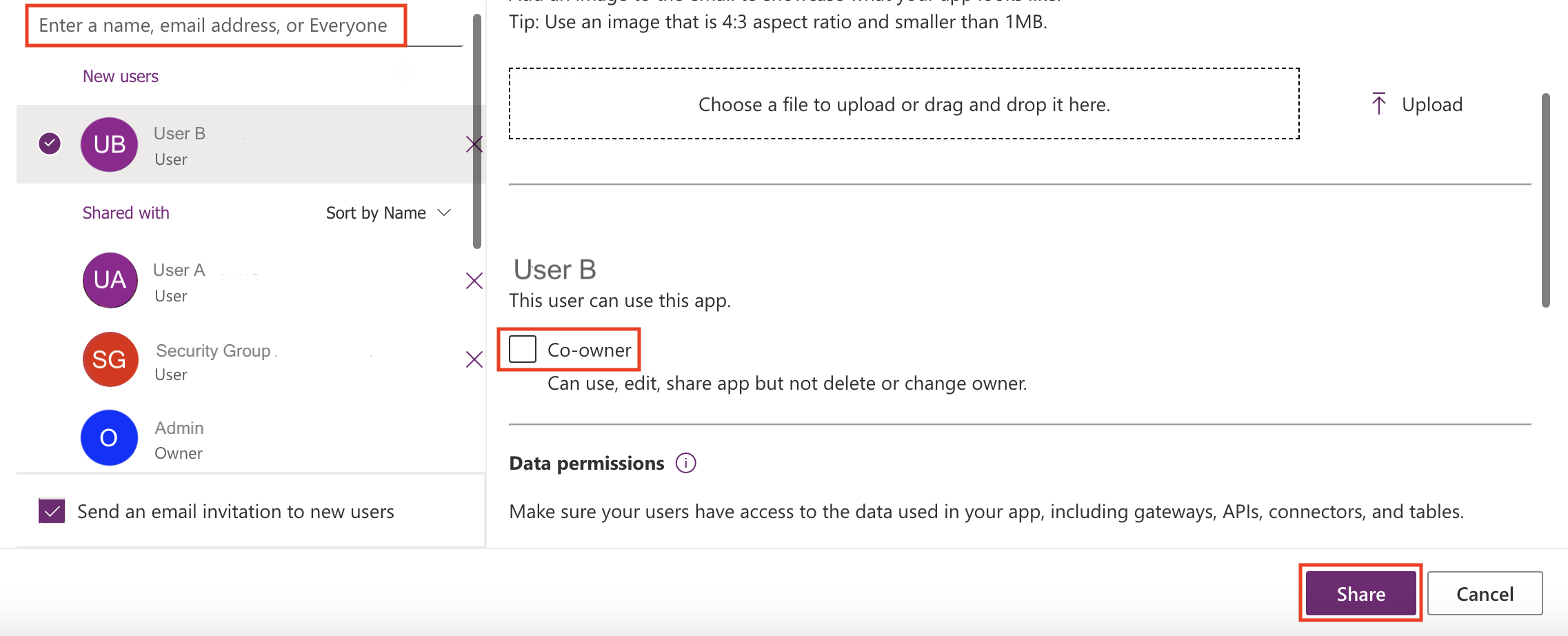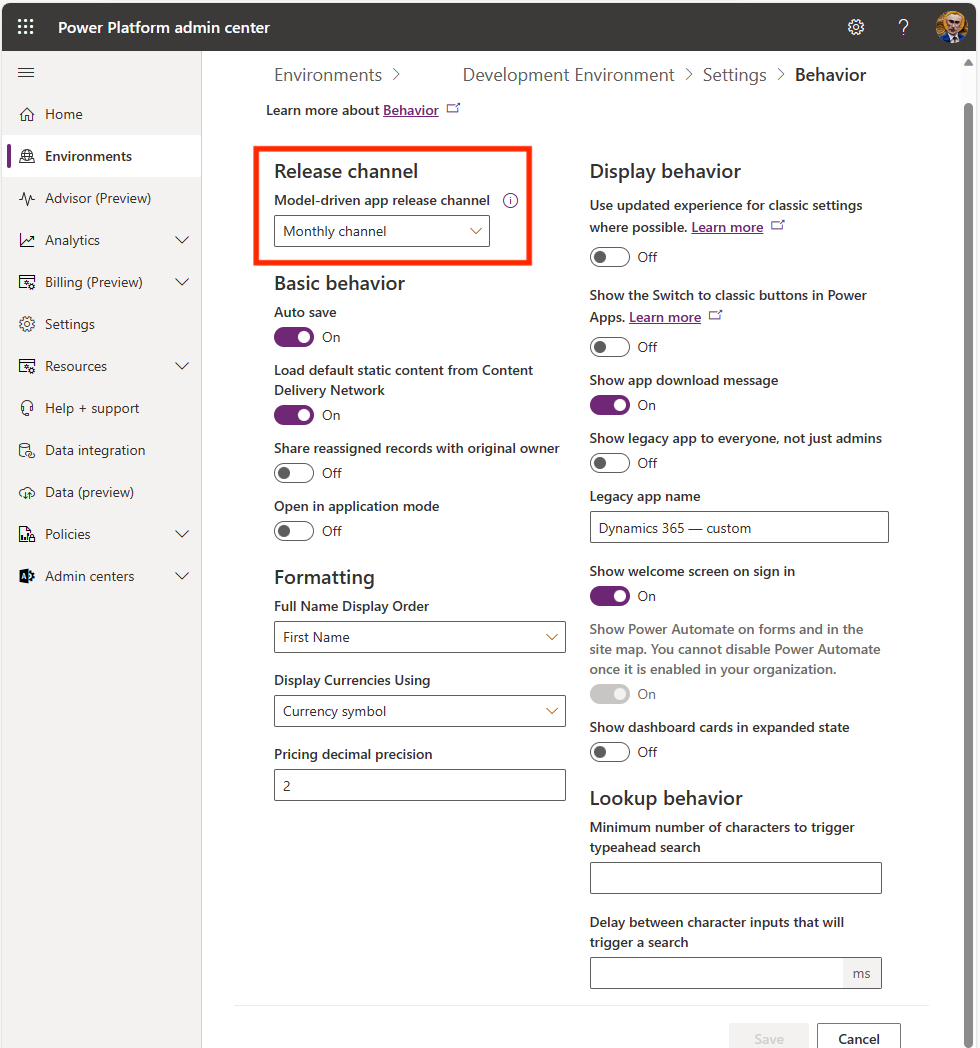Install and set up the Appointment Booking template
Enterprise templates for Power Platform are enterprise-ready solutions that are designed to be installed, customized, deployed, and managed by a centralized team at your organization to support common governance and security practices.
Establish a centralized team that consists of key stakeholders, product owners, and Power Platform administrators and developers. Be sure to review Power Platform best-practices and administration resource links and to develop plans that suit your organization's needs.
More information:
- Power Platform adoption best practices
- Administer Microsoft Power Platform
- Working with enterprise systems
As a Microsoft Power Platform admin, follow the steps outlined in this article to install and set up the Appointment Booking template.
Step 1: Review prerequisites
Review the licensing and administration requirements, identify opportunities, and develop a plan of action that suits your organization's needs.
Confirm licensing
Confirm your organization has the necessary licensing to carry out an enterprise template implementation. You need:
One of the following Power Apps plans:
- Power Apps Premium
- Power Apps per app
- Power Apps per app pay-as-you-go-meter
- Power Apps use rights included with Dynamics 365 licenses
More license details are available in the Microsoft Power Platform Licensing Guide
Note
Power Apps use rights included with Microsoft 365 and Office 365 licenses will not suffice to install the template.
Tip
A free Developer Plan is a great way to install the template for evaluation purposes. More information: Power Apps Developer Plan
Create environments and data policies
It's important to have a cohesive environment and data policy strategy for enterprise templates. To successfully install and manage the Appointment Booking template, confirm these resources and practices are in place.
Administrators - Be sure admins with the necessary privileges are available to coordinate and assign licensing and create environments.
- Microsoft Entra ID Global or tenant User Administrator to assign Power Apps or Power BI licensing
- Power Platform Administrator to create environments
More information: Microsoft Power Platform admin
Environments - Follow application lifecycle management (ALM) best practices in creating and managing environments. Create and prepare a Power Platform developer environment specifically for the Appointment Booking solution files. Also consider:
- The Power Platform environment is set up with a Dataverse database
- Environment maker security role privileges, at a minimum, are assigned to the user who installs the solutions in that environment
More information: Environments overview
Data loss prevention policies - Ensure the environment has access to the Microsoft connectors used by the Appointment Booking template:
More information: Environment overview
Step 2: Create connections
Cloud flows need specific connection references to work correctly. Connection references are included in the solution, but connectors often need to be manually set up.
The installation requires you to set up four new connections for the Appointment Booking app. It's best to create the connections before importing the solution to make the import smoother. If you create the connections during import, you have to jump back and forth between browser windows.
To create the connections in advance, take these steps:
Go to Power Apps
Go to Connections and select + New Connection to create new connections with each of these Microsoft connectors:
More information: Manage connections in canvas apps
Step 3: Install solution files
There are two solution installation options available for you to consider:
- You can select the Get it now button on the template's AppSource offer page and it automatically takes you to an install window in the Power Platform admin center.
- You can download either a managed or an unmanaged version of the solution files and manually import them into your environment according to your organization's requirements.
Tip
Go to the Templates-for-Power-Platform GitHub project site to log your questions or issues and get support for the Appointment Booking template.
Install from AppSource
You can access and install the Appointment Booking template from AppSource, a Microsoft digital storefront. Take these steps to go through the AppSource install process:
- Go to the Appointment Booking template in AppSource and select Get it now. This takes you to the Install Appointment Booking Template window in the Power Platform admin center.
- Select the developer environment that you prepared for the template.
- Agree to the Terms and Privacy statements by checking the boxes.
- Select Install. You're taken to a screen where you can view the installation status. Once the installation is complete, the status shows as Installed.
Important
Two solutions are always installed in your environment:
- IT Base. Contains components that enable localization capabilities. By sharing the components across solutions, common strings can be localized once in the base solution and all dependent solutions get the benefit.
- Appointment Booking. Contains all the necessary components to enable the implementation of the Appointment Booking program within an organization.
Download and manually install solution files
You also have the option to download managed or unmanaged solution files to manually install into your prepared environment according to your organization's requirements:
Download the following managed or unmanaged solution files:
Go to Power Apps and select the environment you prepared for the solution.
Select Solutions on the left pane.
Select Import solution.
Browse for and select either the managed or unmanaged version of the mpa_ITBase file downloaded in previous step.
Select Next.
Select Import to start the import process of the IT Base solution. Once the import is complete, you're notified with a Success message.
Browse for and select either the managed or unmanaged version of the mpa_Appointment Booking file downloaded in previous step.
Select Next and Next again.
For each of the connections listed, select the existing connection that was created in the previous step.
Select Next.
Skip the environment variable setup for now because the required URL values only become available after the apps are imported into the environment.
Select Import to start the import process of the Appointment Booking solution. Once the import is complete, you're notified with a Success message.
More information: Solution concepts
Step 4: Create shared calendar
As an Outlook admin, take these steps to create a shared Outlook calendar and set users up as Meeting Providers:
- Open your organization's Outlook app.
- Go to the calendar icon on the left pane.
- Select Add calendar.
- Select Create blank calendar.
- Enter a name for the new shared calendar.
- Add the new calendar to Other calendars.

- Select Save.
- Select Share.
- Search for the email or name of a user who needs to be set up as a Meeting Provider.
- Select Can edit for permission.
- Select Save.
- Select Share.
- Repeat steps 9-11 until all intended users who need to be set up as Meeting Providers are granted access with edit permissions to the shared calendar.
- Once all Meeting Providers have been set up, select the X to close the dialog box and return to the calendar.
More information: Create, view, or delete a calendar group
Step 5: Update environment variables
Environment variables support your application lifecycle management (ALM) strategy as you migrate the template across environments. Environment variables store keys and values for information that is contextual to the environment the solution is in. Take these steps to update an environment variable for the Appointment Booking solution in Power Apps.
Additionally, connection references allow makers to configure flows that allow connections to be managed centrally vs. coupled to the flow. This also supports your ALM strategy since you don't need to introduce customizations or solution layers as your flows migrate across environments.
- Go to Go to Power Apps and select the environment that contains the Appointment Booking solution.
- Select the Appointment Booking solution.
- Go to Environment Variable.
- Select the Shared Calendar Name or select the three dots and select Edit.
- On Default Value, enter the shared calendar name created in Outlook.
- Select Save.
Step 6: Assign security roles
Set up security roles in your solutions so admins can manage access, language support, and experiences in the app.
There are three security roles:
IT Base - IT Base User - Assign this role to an admin who needs to perform specific admin tasks such as localizing strings and monitoring for errors.
Appointment Booking – Admin - Assign this role to the manager who needs to manage your organization's shared calendars and appointment data. This security role has access to both the Appointment Booking Administrator app and the Appointment Booking app.
Appointment Booking – User - Assign this role to everyone in your organization who needs access to the Appointment Booking canvas app, where appointment slots are managed and appointment bookings are made.
Roles can be assigned from the admin portal.
- Go to the Power Platform admin center.
- Select Environments on the left-side menu and select the environment where the solution is installed.
- Select Users > See all.
- Select the user(s).
- Select Manage security roles and select the appropriate roles for each user.
- Select Save.
Note
All licensed users, whether or not they are members of the security groups, must be assigned security roles to access data in the environments. You can also assign the security roles in the web application. If users don't have a security role, they'll get a data access denied error when trying to run an app. Users can't access environments until they're assigned at least one security role for that environment.
More information:
- Manage application users in the Power Platform admin center
- Control user access to environments: security groups and licenses
Step 7: Set cloud flows to on
Open the newly installed Appointment Booking solutions and verify that the cloud flows are set to the on status. If not, turn the status to on.
- Go to Power Apps and select the environment you installed the solution in.
- Select Solutions on the left pane.
- Select the Appointment Booking solution from the list.
- Select Cloud flows on the left pane.
- Select each cloud flow to verify that it is turned on.
- Select Turn on on the command bar if the flow is not already set to on.
Step 8: Share the apps
Take the following steps to share the apps with your users:
- Go to Power Apps and select the environment you installed the solution in.
- Select Solutions on the left pane and select the Appointment Booking solution from the list.
- Select Apps.
- Go to the Appointment Booking canvas app in the list and select the three dots to see a list of actions.
- Select Share.
- Search for and add the users you want to share the app with.
- For users who should be able to edit the app, select the Co-owner box.
- For regular users of the app, leave that checkbox empty.
- If everyone in the organization should be able to use the app, select Everyone in the Enter a name box.
- In the Data permission area, select the roles from a dropdown list. It's next to the Microsoft Dataverse tables that the Appointment Booking app uses. Be sure to select the correct Appointment Booking role (Administrator or User) for each user.
- Add an email message.
- Select Share.

Note
If Appointment Booking apps aren't shared with you and you cannot access them directly from Power Apps, please contact your admin.
More information: Share a canvas app with your organization
Step 9: Enable Copilot
Microsoft Copilot for Power Apps model-driven apps is a next-generation AI assistant for app admins to get insights about the data in their apps through conversation in natural language. As an Appointment Booking admin, you can leverage Copilot to help you get insights on appointment booking data. As a Power Platform admin, take these steps to enable Copilot and manage behavior settings for all users in the selected environment:
- Go to the Power Platform admin center.
- Select Environments on the left pane and then select the environment where you want to enable copilot for model-driven app users.
- Select Settings.
- Expand the Product section and select Features to turn on Copilot.
- In the Copilot section, set the value for Allow users to analyze data using an AI-powered chat experience in canvas and model-driven apps to On.
- Select Save.
- Next, go back to Settings.
- Expand the Product section and select Behavior to manage behavior settings.
- In the Release channel section, select Monthly channel from the dropdown.
- Select Save.
 More information: Changing release channels for model-driven apps guidance.
More information: Changing release channels for model-driven apps guidance.
Step 10: Turn on Auditing
While this isn't required, we recommend enabling the audit setting on the system, so it's easy to see who creates and updates records.
Take these steps to enable the audit settings:
- Go to Power Platform admin center.
- Select Environments on the left pane and select the environment where the solution is installed.
- Select Settings.
- Select Start Auditing.

Next step
Feedback
Coming soon: Throughout 2024 we will be phasing out GitHub Issues as the feedback mechanism for content and replacing it with a new feedback system. For more information see: https://aka.ms/ContentUserFeedback.
Submit and view feedback for